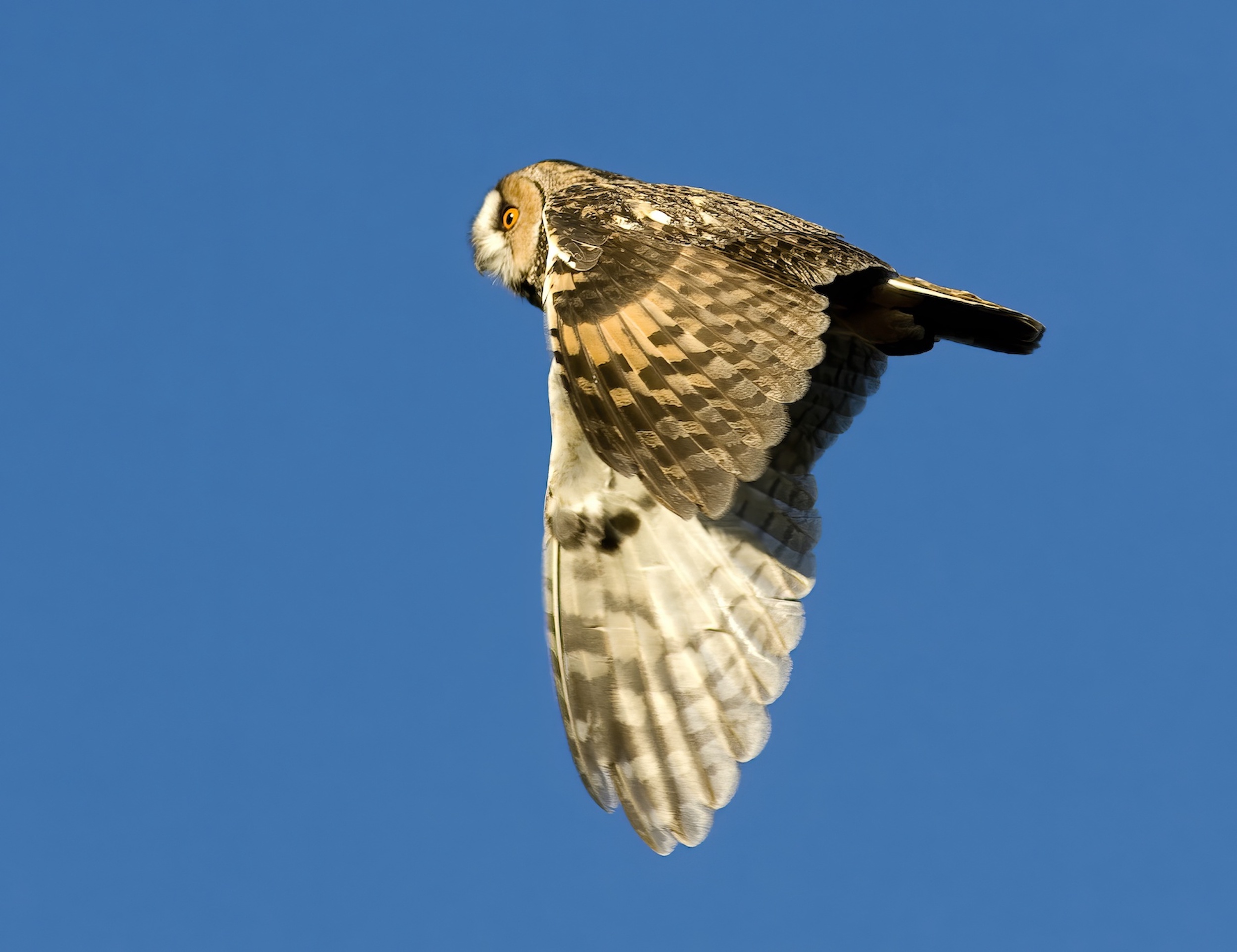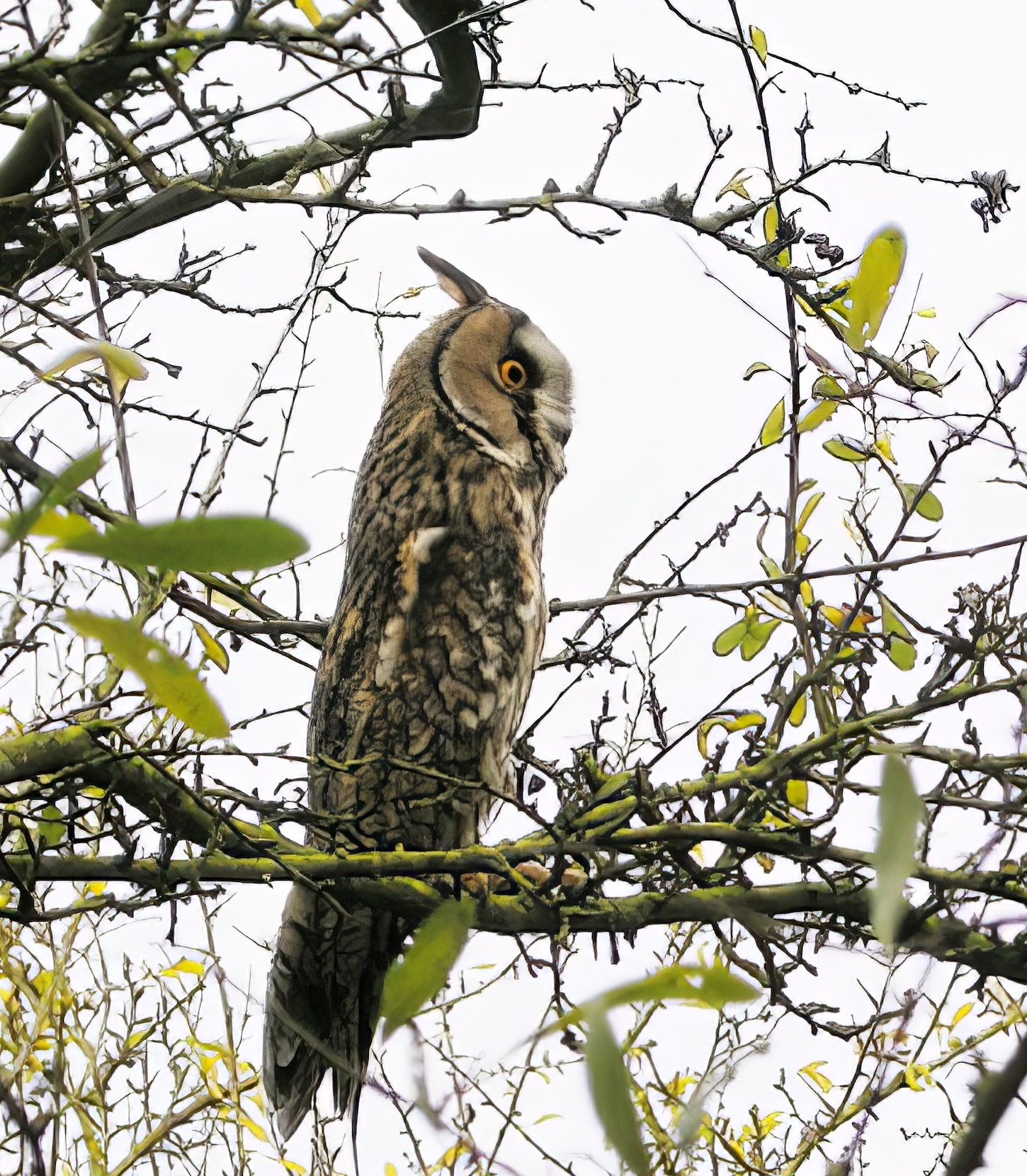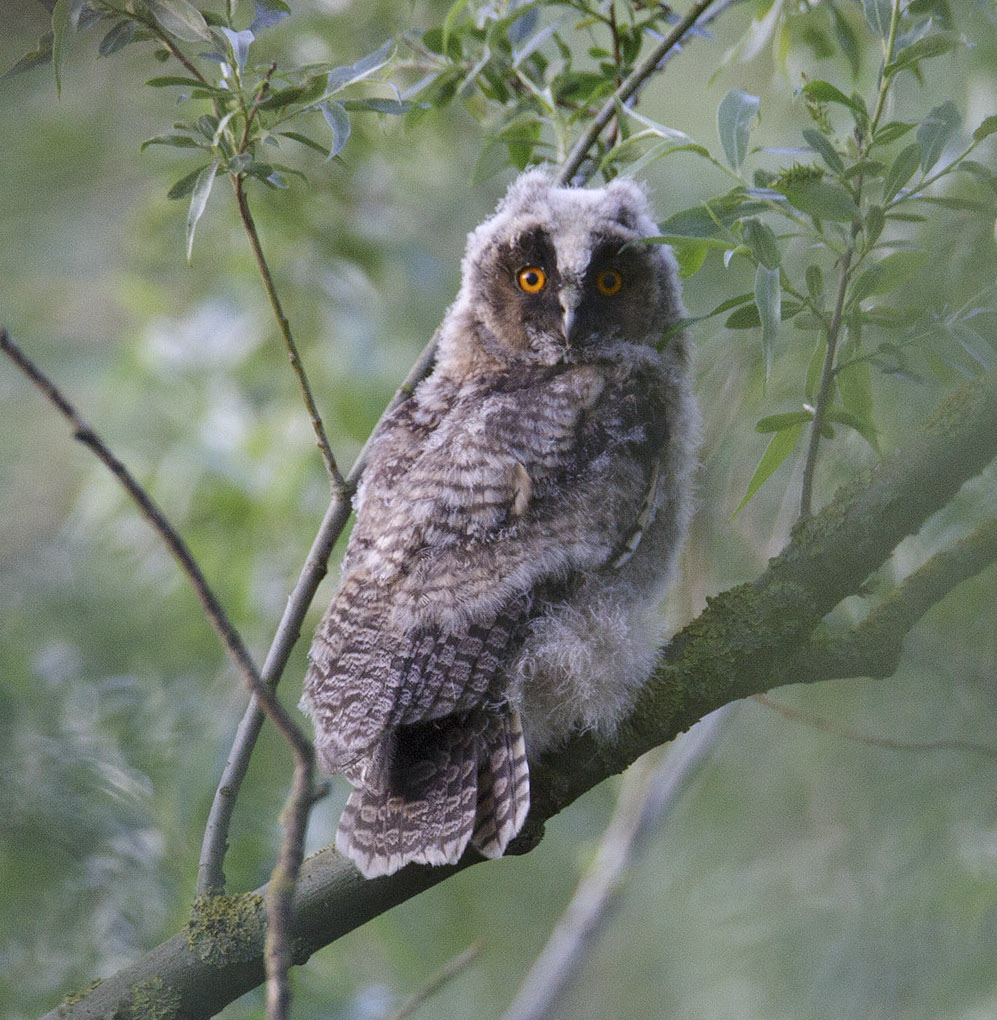Long-eared Owl Asio otus
Very scarce and declining breeding bird in county and scarce winter visitor.



Long-eared Owls: left, Ancholme Valley November 2006 (Graham Catley); centre, a migrant "fresh in" at Frampton Marsh November 13th 2008 (Paul Sullivan);
Right, Long-eared Owl chick north Lincolnshire May 27th 2014 (Graham Catley).
It is quite likely that Long-eared Owl is currently the most under-recorded bird in Lincolnshire. RBBP records show an average of two pairs per year reported as having bred during the period 2013-2017. During the Atlas the population was estimated at 50-100 pairs in the 1980s. It is possible that they have significantly declined, but it is equally possible they are being missed and/or under-reported. The woodland area of Lincolnshire has changed little over the last 40 years, though “tidying up” has resulted in less big old scrubby hawthorns being available as nesting and roosting sites and it may be less early stage conifer plantation is available. With green conservation status, if there has been any decline in Lincolnshire it is not being repeated across the country.
The numbers wintering in the county have declined too. The Atlas reported a summed winter peak in the 1990s of 106 birds. LBR reports for the five years to 2018 show a range from three in 2014 and 2018 to 11 in 2016, with an average of 5-6. Many former well-known winter roost sites are no longer occupied. Birds ringed in The Netherlands (1) and Germany (1) have been recovered in the county, while birds ringed in the county have been recovered in Scandinavia (2) and Germany (1). Spring and autumn migration averaged out at 2 and 6 birds per annum respectively. It is possible wintering and passage has been affected by climate change but there is no firm evidence to support that conjecture. All in all, a grim picture!
(Account as per new Birds of Lincolnshire (2021), included October 2022)
